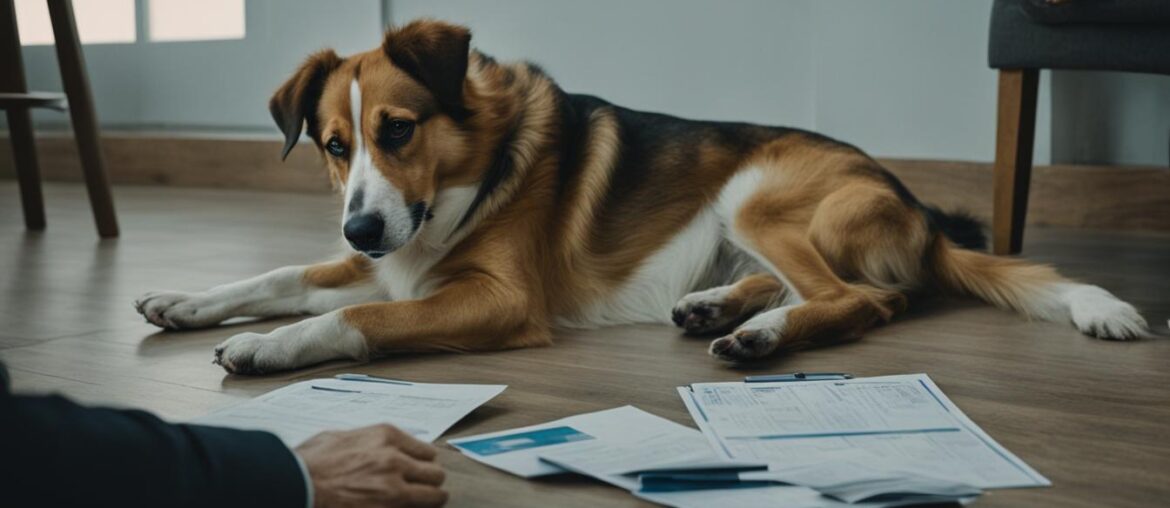When a dog is diagnosed with a torn ACL, the decision of whether or not to put them down is a personal one that requires careful consideration. While a torn ACL in dogs is treatable and rarely medically necessary to euthanize, there are factors to consider, such as the opinion of the veterinarian and the overall condition and quality of life of the dog. It is important to consult with a veterinarian to assess the individual circumstances of the dog and determine the best course of action.
Key Takeaways:
- A torn ACL in dogs is treatable and rarely requires euthanasia.
- Consulting with a veterinarian is crucial in assessing the individual circumstances of the dog.
- Factors such as the opinion of the veterinarian, the dog’s overall condition, and quality of life should be considered.
- Treatment options for a torn ACL in dogs include conservative management and surgical interventions.
- Rehabilitation and post-operative care are important for a dog’s recovery from a torn ACL.
Diagnosis and Treatment Options for a Torn ACL in Dogs
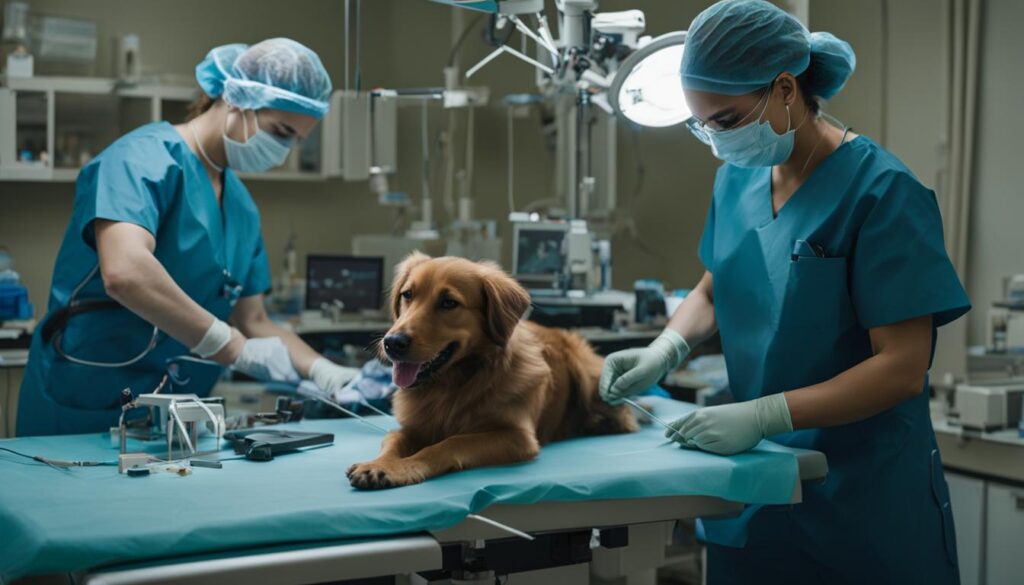
A torn ACL, or cruciate ligament injury, is a common injury in dogs, especially in active ones. Dogs with a torn ACL may exhibit symptoms such as lameness, pain, and swelling in the affected leg. If you notice these signs in your furry friend, it is crucial to take them to a trusted veterinarian for a thorough examination and proper diagnosis.
The veterinarian may recommend diagnostic tests such as X-rays or an MRI to confirm the torn ACL. These tests help determine the extent of the injury and assist in formulating an effective treatment plan.
When it comes to treating a torn ACL in dogs, there are two primary options: conservative management and surgery. The choice of treatment depends on various factors, including the dog’s age, activity level, overall health, and the severity of the injury.
Conservative management focuses on non-surgical approaches to facilitate healing. It includes strategies such as pain management medications, anti-inflammatory drugs, controlled activity, and physical therapy. The goal is to provide relief from discomfort and promote natural healing of the torn ligament.
Note: Early intervention is key for conservative management to be successful. If not treated promptly, a torn ACL in dogs can lead to further joint damage and complications.
On the other hand, surgical treatment options are available for dogs with a torn ACL. Some common surgical techniques include suture repair and osteotomy. The specific procedure recommended by the veterinarian depends on the individual dog’s condition and the severity of the injury.
| Treatment Options | Description |
|---|---|
| Conservative Management |
|
| Surgery |
|
In both cases, the ultimate goal is to relieve pain, restore stability to the affected leg, and ensure your canine companion can resume a normal, active lifestyle.
Factors to Consider when Deciding on Treatment
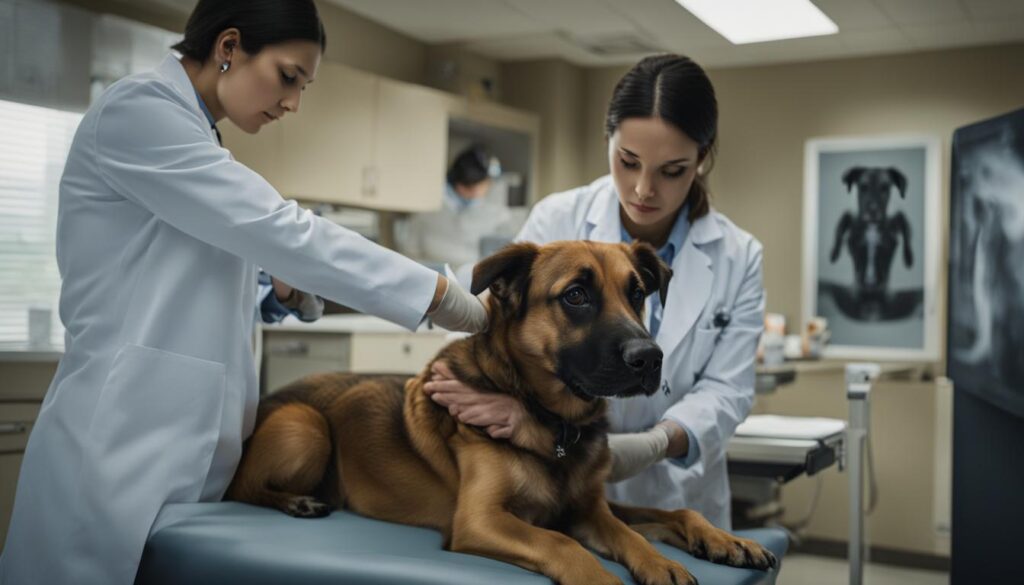
When faced with a torn ACL in a dog, it is essential to carefully consider various factors before deciding on the appropriate treatment. The age and overall health of the dog are crucial considerations in determining if surgery is a viable option. While younger and healthier dogs are generally better candidates for surgical intervention, senior dogs or those with underlying health complications may not tolerate the procedure well.
Another factor to take into account is the cost of surgery. ACL surgery for dogs can be expensive, and it may not be covered by pet insurance. Therefore, it’s important to consider your financial situation and weigh the potential costs of the procedure against the expected benefits for your dog’s well-being.
If previous treatment options, such as conservative management or non-surgical alternatives, have failed to provide relief, euthanasia for a dog with a torn ACL may be an option to consider. However, euthanasia should only be considered when the prognosis for recovery is poor, and the dog’s overall quality of life is significantly compromised. This decision is a complex and deeply personal one that should be made in consultation with a veterinarian.
| Factors to Consider when Deciding on Treatment | Age and overall health of the dog | Financial considerations | Effectiveness of previous treatment options | Prognosis for recovery | Quality of life for the dog |
|---|---|---|---|---|---|
| Euthanasia Considerations | Severity of the tear and associated complications | Inability to manage pain and ensure comfort | Limited mobility and decreased quality of life | Advanced age or significant health issues | Insufficient response to treatment |
Ultimately, the decision on how to proceed with treatment for a torn ACL in a dog should prioritize the best interest of the dog’s quality of life and overall well-being. Consultation with a veterinarian is paramount to accurately assess the individual circumstances of the dog and to determine the most suitable treatment approach.
Recovery Process and Rehabilitation for Dogs with a Torn ACL
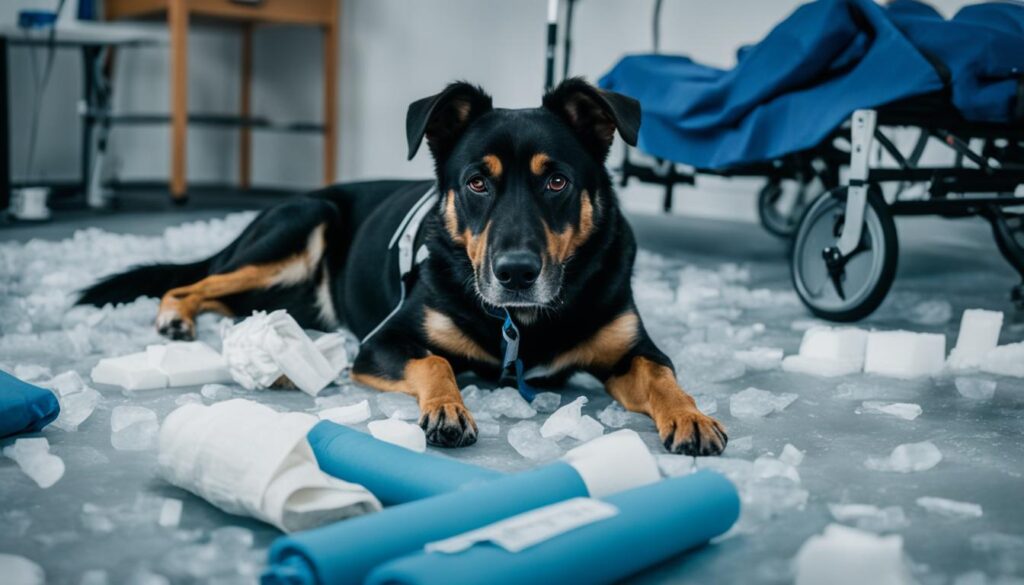
After undergoing surgery for a torn ACL, dogs require a period of rest and rehabilitation. It is important to follow the veterinarian’s recommendations for post-operative care, which may include limited activity for at least six weeks. Physical therapy and rehabilitation exercises can help improve the dog’s range of motion, strength, and overall recovery. Regular follow-up appointments with the veterinarian may be necessary to monitor the dog’s progress and adjust the treatment plan accordingly.
The recovery process for a dog with a torn ACL involves several stages. Initially, the focus is on managing pain and inflammation. The veterinarian may prescribe pain medication and anti-inflammatory drugs to help alleviate discomfort. Rest and restricted activity are crucial during this time to allow the surgical site to heal.
As the dog’s condition improves, controlled movement and physical therapy exercises are introduced to gradually strengthen the affected leg. These exercises may include range of motion exercises, muscle strengthening exercises, and balance training. The goal is to rebuild muscle strength and joint stability while ensuring the dog does not overexert or reinjure themselves.
In some cases, the use of assistive devices, such as braces or splints, may be recommended to provide additional support to the injured leg during the recovery process. These devices help stabilize the joint and reduce the risk of reinjury.
Throughout the recovery period, regular check-ups with the veterinarian are essential to monitor the dog’s progress and make any necessary adjustments to the rehabilitation plan. The veterinarian will assess the dog’s range of motion, muscle strength, and overall mobility to gauge the effectiveness of the treatment.
Recovering from a torn ACL can be a lengthy process, and each dog’s recovery timeline may vary. It is important to be patient and consistent with the rehabilitation program to ensure the best possible outcome for the dog. With proper care, rehabilitation, and support, many dogs are able to regain full mobility and return to their normal activities after a torn ACL injury.
Alternative Treatment Options for Dogs with a Torn ACL
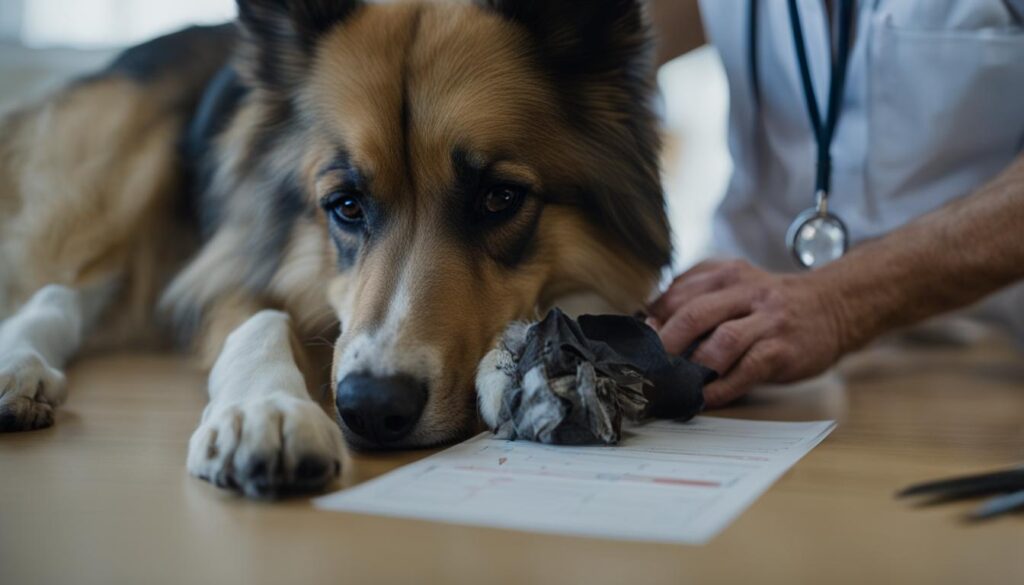
In some cases, surgery may not be a viable option for treating a torn ACL in a dog. Fortunately, there are alternative treatment options available that can help support the dog’s recovery and promote healing. These non-surgical options are especially beneficial for dogs who may not be suitable candidates for surgery due to factors such as age, overall health, or financial considerations.
Conservative Management
One alternative treatment option for a torn ACL in dogs is conservative management. This approach involves managing the pain and inflammation associated with the injury while allowing the ligament to heal naturally over time. Conservative management may include:
- Pain management through medication prescribed by a veterinarian
- Restricted activity and exercise to prevent further damage and promote healing
Conservative management requires strict adherence to the veterinarian’s instructions and regular monitoring of the dog’s progress. It is essential to ensure that the dog’s quality of life is maintained while allowing the torn ACL to heal without surgical intervention.
Alternative Therapies
In addition to conservative management, various alternative therapies can be used to support the recovery of a dog with a torn ACL. These therapies aim to reduce pain, manage inflammation, and improve the dog’s overall well-being. Some common alternative therapies include:
- Physical therapy: Physical therapy exercises can help improve the dog’s range of motion, strengthen surrounding muscles, and promote healing.
- Massage therapy: Massage techniques can help relax muscles, reduce pain, and improve circulation to the injured area.
- Acupuncture: Acupuncture involves the insertion of thin needles into specific points on the body to promote healing and reduce pain and inflammation.
These alternative therapies should be administered by qualified professionals experienced in working with dogs to ensure their safety and effectiveness.
Dog ACL Brace
Another alternative treatment option for dogs with a torn ACL is the use of a dog ACL brace. These braces are designed to provide support and stability to the injured knee joint, allowing the dog to maintain mobility and engage in limited activity while the ligament heals. The proper fit and adjustment of the brace are crucial for its effectiveness, so it is essential to consult with a veterinarian or a professional specializing in orthotics for dogs.
It’s important to note that while alternative treatment options can be beneficial for some dogs, they may not provide the same level of stability and long-term outcomes as surgical intervention. Consulting with a veterinarian is essential to determine the best alternative treatment option for the specific needs of the dog, taking into account factors such as the severity of the torn ACL, the dog’s overall health, and their ability to tolerate and benefit from non-surgical treatments.
Alternative treatment options such as conservative management, alternative therapies, and the use of a dog ACL brace can provide viable alternatives to surgery for dogs with a torn ACL. These options can help manage pain, support healing, and improve the dog’s quality of life. However, it is crucial to consult with a veterinarian to determine the most appropriate treatment plan based on the specific circumstances and needs of the dog.
Risks of Not Treating a Torn ACL in Dogs

It is crucial to recognize the risks associated with not treating a torn ACL in dogs. Without proper treatment, the injury can cause ongoing pain and suffering for the dog. It can also lead to the development of arthritis in the affected joint, which can significantly impact the dog’s mobility and quality of life. In severe cases, untreated ACL injuries can even be fatal.
To prevent further complications and ensure the well-being of the dog, prompt treatment and appropriate interventions are necessary.
Considering Euthanasia for a Dog with a Torn ACL
While euthanasia is rarely necessary for a dog with a torn ACL, there may be exceptional circumstances where the dog’s overall condition and quality of life warrant consideration of this difficult decision. Factors such as age, health complications, and the prognosis for recovery should be thoroughly evaluated with the guidance of a veterinarian. Euthanasia should only be considered if it is determined to be the most humane course of action for the dog, taking into account their pain, suffering, and ability to enjoy a good quality of life.
When faced with the decision of putting a dog to sleep with a torn ACL, it is important to consider the individual circumstances and weigh the options. Euthanasia should not be taken lightly and should only be considered when the dog’s pain and discomfort are severe and unmanageable, or when their overall quality of life is significantly compromised.
“Deciding on euthanasia is never an easy choice, but it is important to prioritize the well-being of the dog and their comfort,” says Dr. Smith, a renowned veterinarian.
A torn ACL can cause considerable pain and discomfort for a dog, and while treatment options are available, they may not be suitable for every dog. Factors such as advanced age, underlying health conditions, or the inability to undergo surgery due to financial constraints may limit the available options for treatment.
When considering euthanasia for a dog with a torn ACL, it is essential to consult with a veterinarian who can provide guidance based on their knowledge and experience. They will assess the overall condition of the dog, considering factors such as their ability to walk, play, and perform everyday activities without excessive pain or discomfort.
Ultimately, the decision to euthanize a dog with a torn ACL should be a well-considered one, focusing on the dog’s best interests and quality of life. It is a deeply personal decision that should be made in consultation with professionals who can provide the necessary support and guidance during this difficult time.
When facing such a challenging decision, it is important to remember that every dog’s situation is unique, and what may be right for one dog may not be for another. Seeking advice from a compassionate veterinarian who understands the specific circumstances of the dog can bring clarity and guidance during this emotional time.
Surgery Success Rate for Dogs with a Torn ACL
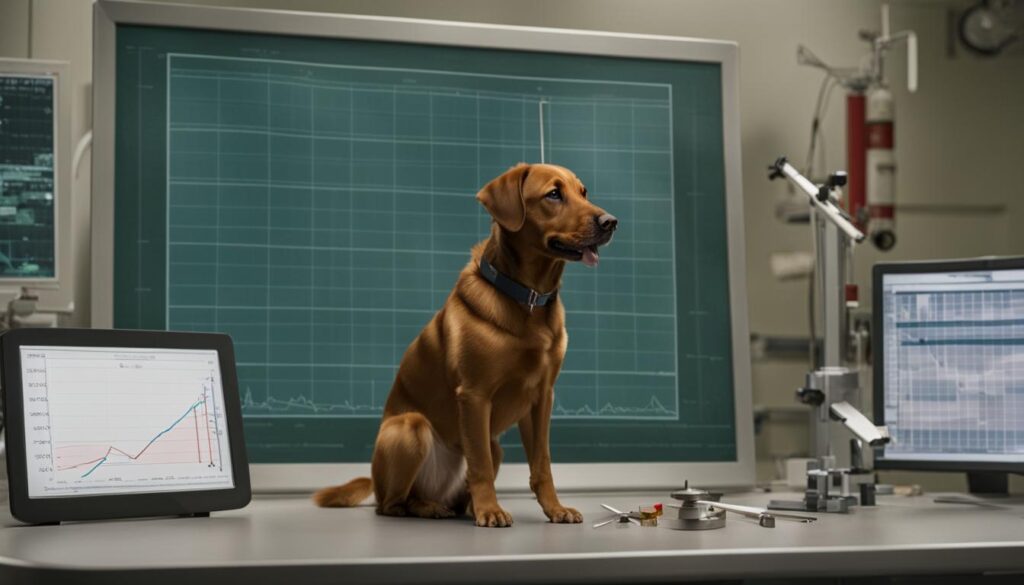
A dog with a torn ACL has a promising prognosis when it comes to surgery. Dog ACL surgery has a high success rate, typically ranging from 90-95%. Surgical intervention is considered the gold standard treatment for cruciate ligament tears in dogs, offering them the best chance for a full recovery and improved quality of life.
Consulting with a veterinarian is essential to discuss the specific surgical options available for your dog. The veterinarian will assess the severity of the ACL tear and recommend the most suitable surgical approach. It is important to consider the associated risks and benefits of the surgery, as well as the financial investment it may require.
Despite the potential cost, ACL surgery provides the best long-term outcomes for dogs with a torn ACL. It enables them to regain mobility, live a pain-free life, and reduce the risk of future complications.
| Surgery Success Rate | Range |
|---|---|
| ACL surgery in dogs | 90-95% |
Non-Surgical Treatment Options for Dogs with a Torn ACL
In certain cases where surgery is not feasible or desired, there are non-surgical treatment options available for dogs with a torn ACL. These options may include conservative management, pain management, alternative therapies such as acupuncture and physical therapy, and the use of orthotics or braces to provide support to the injured knee. While non-surgical treatments may not provide the same level of stability as surgery, they can help manage pain, improve mobility, and enhance the dog’s overall quality of life.
Conservative management involves a combination of restricted activity, pain medication, and physical therapy to allow the torn ACL to heal naturally. By limiting the dog’s movement and providing pain relief, conservative management aims to reduce inflammation and promote tissue repair. This approach may be suitable for dogs that are not good candidates for surgery due to age, health conditions, or financial constraints.
Alternative therapies such as acupuncture and physical therapy can also be beneficial for dogs with a torn ACL. Acupuncture involves the insertion of thin needles into specific points of the body to stimulate healing and relieve pain. Physical therapy focuses on exercises and stretches that improve range of motion, strength, and joint stability. Both of these therapies can help reduce pain and promote recovery.
The use of orthotics or braces is another non-surgical option for dogs with a torn ACL. These devices provide external support to the injured knee, helping to stabilize the joint and reduce pain. They can be particularly beneficial for dogs with a partial tear or a less severe ACL injury. Orthotics and braces come in different designs and sizes, and it is important to consult with a veterinarian to determine the most suitable option for your dog.
While non-surgical treatment options may not provide the same level of stability as ACL surgery, they can offer significant benefits for dogs with a torn ACL. These alternatives can help manage pain, improve mobility, and enhance the dog’s overall quality of life. When considering non-surgical treatment, it is important to consult with a veterinarian to determine the most appropriate approach based on your dog’s individual needs and circumstances.
When to Consider Euthanasia for a Dog with a Torn ACL
Euthanasia for a dog with a torn ACL should be considered in exceptional circumstances when the dog’s age, overall health, and quality of life are significantly compromised.
If the torn ACL is accompanied by other serious health conditions or if the dog is experiencing severe pain and is unable to enjoy a good quality of life, euthanasia may become a compassionate choice to prevent further suffering.
However, it is crucial to consult with a veterinarian to carefully evaluate the specific circumstances and assess all available treatment options before making a decision.
Image of a dog with its owner, illustrating the emotional aspect of considering euthanasia.
The Importance of Timely Treatment for a Torn ACL in Dogs
Timely treatment for a torn ACL in dogs is of utmost importance to ensure the best possible outcome for their health and well-being. Without prompt intervention, a torn ACL can lead to further complications and significantly impact a dog’s quality of life.
When a dog experiences a torn ACL, the stability of their joint is compromised, leading to inflammation and the potential development of degenerative joint disease. This can result in chronic pain and reduced mobility, hindering the dog’s ability to perform daily activities and enjoy a normal life.
Early intervention is key to preventing these complications. Whether through surgical or non-surgical options, addressing the torn ACL as soon as possible offers the best chance for a full recovery and long-term joint health.
Seeking veterinary care promptly when a dog shows signs of a torn ACL is crucial. A veterinarian will be able to accurately diagnose the injury and recommend appropriate treatment. This may involve surgical repair to stabilize the joint or non-surgical approaches such as pain management and physical therapy.
During the early stages of a torn ACL, the dog’s condition may be more favorable for treatment, allowing for better surgical outcomes and improved long-term joint function. Delaying treatment, on the other hand, can lead to a more severe injury and make the recovery process more challenging.
By prioritizing timely treatment, dog owners can give their furry companions the best chance at a successful and complete recovery. Consulting with a veterinarian and following their recommendations will help ensure that the dog receives the appropriate care and interventions necessary for their well-being.
Wrapping Up
Making the decision of when to put a dog down with a torn ACL is a difficult and highly personal choice. In most cases, euthanasia is not necessary for a torn ACL, as there are numerous treatment options available. These options range from surgery to non-surgical alternatives that can help alleviate pain and improve the dog’s quality of life. It is crucial to consult with a veterinarian to assess the individual circumstances of the dog and determine the best course of action.
Factors such as the age, overall health, and quality of life of the dog should be taken into account when making this decision. Veterinarians are equipped with the knowledge and expertise to guide dog owners through this challenging process and provide the appropriate advice. By considering all available options and discussing them with the veterinarian, dog owners can ensure the best possible outcome for their furry companion.
Ultimately, the well-being and comfort of the dog should be the top priority. Treatment plans can be tailored to suit the specific needs of each dog, ensuring that they receive the care and support necessary for a full recovery. With the right treatment and attentive care, dogs with a torn ACL can often regain mobility and enjoy an improved quality of life. Remember, every case is unique, and there is no one-size-fits-all solution. The decision should be made with love, compassion, and the best interest of the dog in mind.
FAQ
When should a dog be put down with a torn ACL?
The decision to put a dog down with a torn ACL is a personal one and should be made in consultation with a veterinarian. In most cases, euthanasia is not necessary for a torn ACL, as there are treatment options available. Factors such as the age, overall health, and quality of life of the dog should be considered.
What are the diagnosis and treatment options for a torn ACL in dogs?
A torn ACL in dogs can be diagnosed through a thorough examination by a veterinarian, including X-rays or an MRI if needed. Treatment options include conservative management (pain management and modified activity) or surgery such as suture repair or osteotomy, depending on the dog’s age, activity level, overall health, and the severity of the injury.
What factors should be considered when deciding on treatment for a torn ACL in dogs?
When deciding on treatment for a torn ACL in dogs, factors such as the dog’s age, health, the opinion of the veterinarian, and the overall prognosis for recovery should be considered. The cost of surgery and the dog’s ability to tolerate it should also be taken into account.
What is the recovery process and rehabilitation for dogs with a torn ACL?
After surgery for a torn ACL, dogs require a period of rest and rehabilitation. This may include limited activity for several weeks, physical therapy, and regular follow-up appointments with the veterinarian to monitor progress and adjust the treatment plan accordingly.
What are the alternative treatment options for dogs with a torn ACL?
Alternative treatment options for dogs with a torn ACL include conservative management (pain management and modified activity), alternative therapies such as acupuncture and physical therapy, and the use of braces or orthotics to provide support to the injured knee.
What are the risks of not treating a torn ACL in dogs?
Without proper treatment, a torn ACL in dogs can lead to ongoing pain, reduced mobility, and the development of arthritis in the affected joint. In severe cases, untreated ACL injuries can even be fatal. Prompt treatment is crucial to prevent further complications and ensure the dog’s well-being.
When should euthanasia be considered for a dog with a torn ACL?
Euthanasia should only be considered for a dog with a torn ACL in exceptional circumstances where the dog’s overall health, quality of life, and prognosis for recovery are significantly compromised. Consultation with a veterinarian is necessary to evaluate the specific circumstances and assess all available treatment options before making a decision.
What is the success rate of surgery for a torn ACL in dogs?
Surgery for a torn ACL in dogs has a high success rate, typically ranging from 90-95%. It is considered the gold standard treatment for cruciate ligament tears in dogs and can provide long-term mobility and pain relief.
What are the non-surgical treatment options for dogs with a torn ACL?
Non-surgical treatment options for dogs with a torn ACL include conservative management (pain management and modified activity), alternative therapies such as acupuncture and physical therapy, and the use of braces or orthotics to provide support to the injured knee.
When should euthanasia be considered for a dog with a torn ACL?
Euthanasia for a dog with a torn ACL should be considered in exceptional circumstances where the dog’s overall health, age, and quality of life are significantly compromised. It should only be done after thorough evaluation of the specific circumstances and assessment of all available treatment options.
Why is timely treatment important for a torn ACL in dogs?
Timely treatment for a torn ACL in dogs is important to prevent further complications and ensure the best possible outcome. Untreated ACL injuries can lead to chronic pain, reduced mobility, and the development of arthritis. Early intervention offers the best chance for full recovery and long-term joint health.


